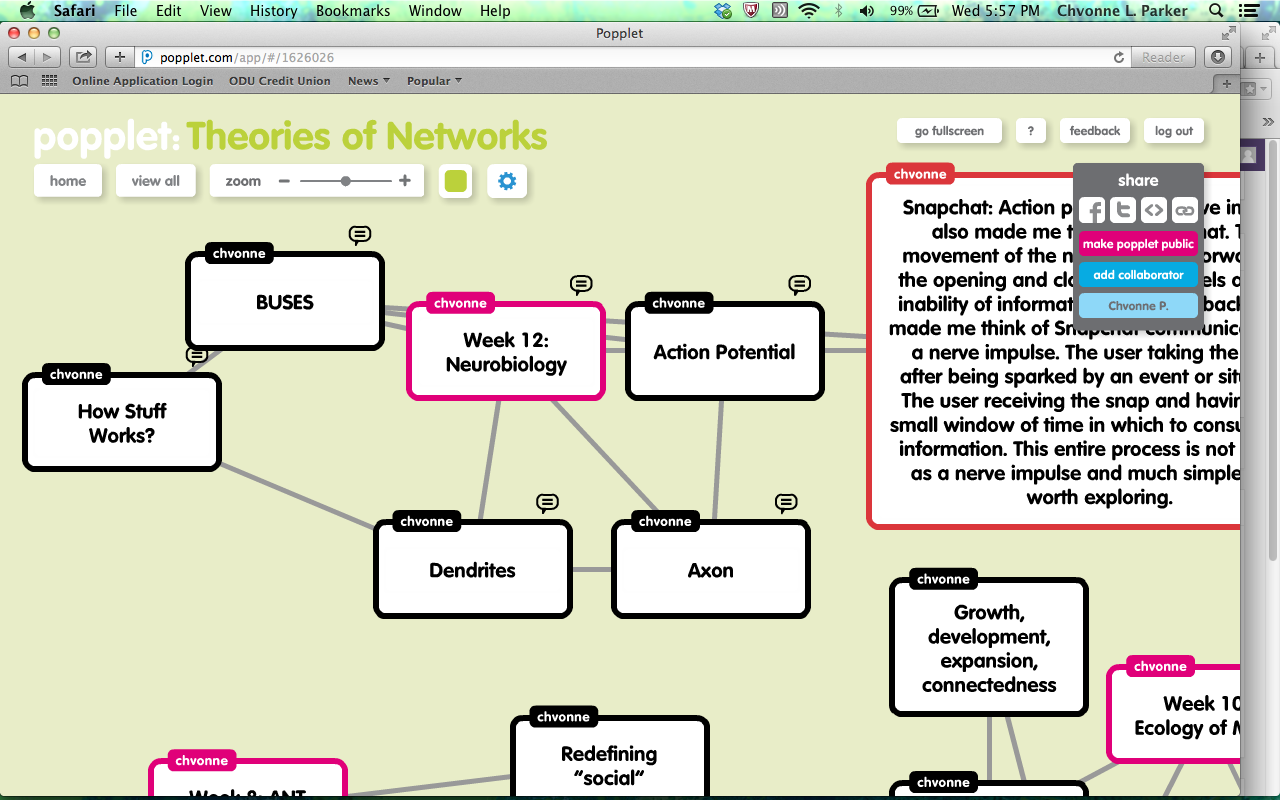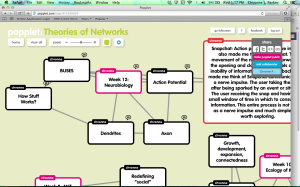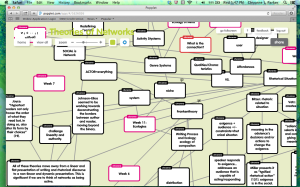I have had several discussions about ambience over the years. The reason being that before I came to English Studies, music was my life. We often discussed ambience in regards to which space would produce the best sound. It is easy for a violin to be drowned out without the right atmosphere. We used to provide background noise to some songs, so they seemed like they were recorded live or recorded near busy streets. A clear crisp sound was not a part of “gritty” hip hop. While my musical worlds were drastically different, I understood the importance of the character of the surrounding.
Thomas Rickert’s Ambient Rhetoric: The Attunements of Rhetorical Being provided a Frankentheory that I could get behind. Although I thought, Rickert’s work would be very challenging (i.e. Foucualt), it was not as daunting as I had imagined. Like Castells, I wished for more time. I felt rushed to absorb everything, and I added it to my lists of text to return to in the future. I also added Rickert’s work to the list of theories that were both enjoyable and accessible. The others are rhetorical situation theory, CHAT, neurology, and affordances. Within Rickert, I could CHAT, ANT, ecology, affordances, Foucault, and the rhetorical situation. He in a sense completes the circle or better yet, extends the network. What I took away most from Rickert was the connection between ambient rhetoric and Heidegger’s conceptualization of dwelling. (Before English, I was also a philosophy major).
Rickert presents ambience as follows:
We are entering an age of ambience, one in which boundaries between subject and object, human and nonhuman, and information and matter dissolve” (1),
“So ambience here refers to the active role that the material and informational environment takes in human development, dwelling, and culture, or to put this differently it dissolves the assumed separation between what is (privileged) human doing and what is passively material” (3).
“Ambience, then, becomes a useful distillation of ongoing dynamic shifts in a vibrant, robust environment that we seek to understand, explain, and work through; ambience is itself ambient, meaning, in part, that ambience, even in such seeming subjective forms as recognition, is not solely human doing” (5).
In Chapter 7, “Ambient Dwelling”, Rickert focuses on ethics, particularly ethos as presented by Hyde as a “dwelling place.” Rickert challenges this notion and asserts that rhetoric is always wordly. He argued in Chapter 5 against rhetoric being “discursively grounded.” Since we are conditioned, impacted, and attuned by the world, we cannot exclusively focus on discourse. Rickert presents: “Our ethics are not something exterior we bring in and deploy but rather a set of comportments that emerge from life as it is lived, from what we do, say, and make” (223). Rickert uses Heidegger to examine how we “dwell with things and each other in the world”
<iframe src=”http://prezi.com/embed/vwck5kkelp0d/?bgcolor=ffffff&lock_to_path=0&autoplay=0&autohide_ctrls=0&features=undefined&disabled_features=undefined” width=”550″ height=”400″ frameBorder=”0″ webkitAllowFullScreen mozAllowFullscreen allowfullscreen></iframe>
I found this interesting given that the topic of Dr. Phillips’ Literature Seminar was Dwelling. It was even more so interesting in that my topic for this class was exploring hip hop and diaspora, especially the connection between Heidegger’s dwelling and the construction of home via hip hop.
I argued that the elements of hip hop, participants in the culture present stories of lived experience, which are usually spatially oriented to particular cities and neighborhoods. These cultural practices allow practitioners the ability to define, create, represent, and build a sense of home. Heidegger’s presents that building has moved away from the original definition of being to the idea of constructing shelter. Heidegger refutes this arguing, “We do not dwell because we have built, but we build and have built because we dwell, that is because we are dwellers” (148). Thus, Heidegger provides both a material and ontological discussion of dwelling as existence, construction of home, and connection to community within a particular space and time.
Hip Hop has a regional and territorial nature in the sense of city, community, neighborhood. Hip Hop culture provides the tools needed for these displaced and oppressed individuals to represent themselves, construct home, and dwell within often inhospitable spaces.
This was also interesting in light of my Oos switching to the cypher, an important concept and place within Hip Hop. Rickert’s ambient rhetoric, with its focus on humans, nonhumans, materiality, and ecology, provides a great lens through which to examine language and its movement within hip hop, hip hop’s connection/integration with place and environment, and the role of material to hip hop. I was especially intrigued by the idea that “the nodes do not exist prior to the network.” I feel like I am entering a chicken or the egg debate. Which came first the networks, the connections, or the nodes? In regards to hip hop, I can see how the structure/environment provided the foundation for the connections to take place. The foundation and connections took shape because of the surrounding environment. The individuals within also shape the environment.
Below is an example of a cypher from the BET Hip Hop Awards. This is more formal than usual, but it gives you the general idea. Disclaimer: This is uncensored






